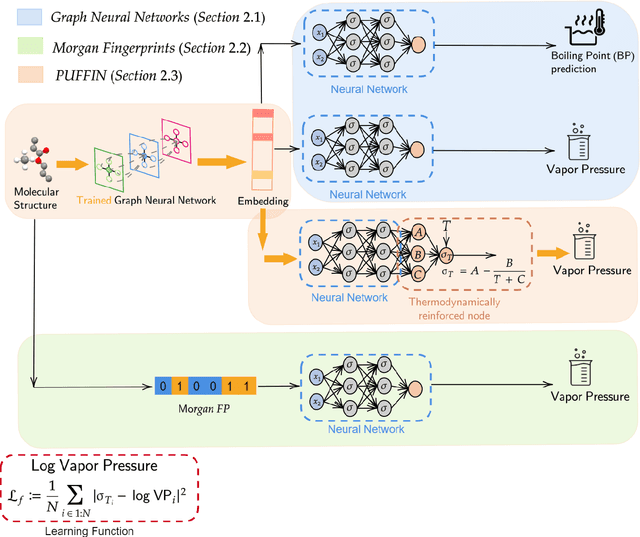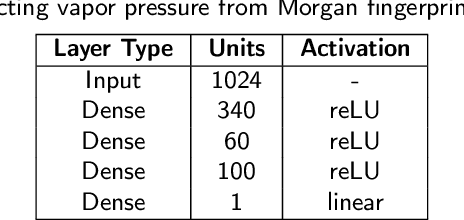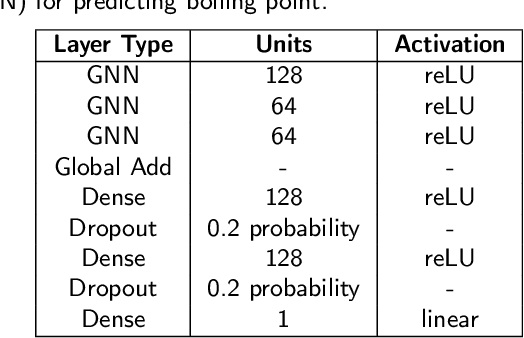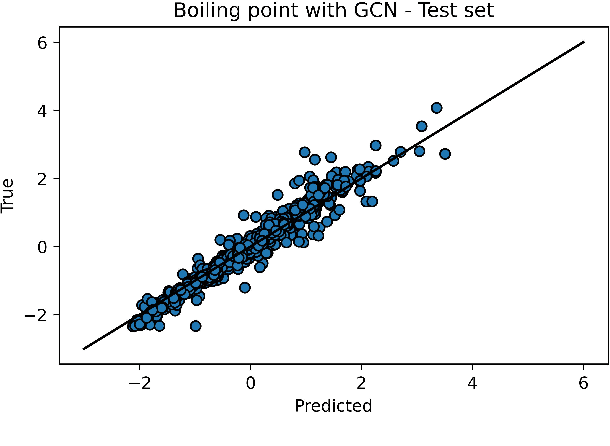Carine Menezes Rebello
Optimizing $CO_{2}$ Capture in Pressure Swing Adsorption Units: A Deep Neural Network Approach with Optimality Evaluation and Operating Maps for Decision-Making
Dec 06, 2023Abstract:This study presents a methodology for surrogate optimization of cyclic adsorption processes, focusing on enhancing Pressure Swing Adsorption units for carbon dioxide ($CO_{2}$) capture. We developed and implemented a multiple-input, single-output (MISO) framework comprising two deep neural network (DNN) models, predicting key process performance indicators. These models were then integrated into an optimization framework, leveraging particle swarm optimization (PSO) and statistical analysis to generate a comprehensive Pareto front representation. This approach delineated feasible operational regions (FORs) and highlighted the spectrum of optimal decision-making scenarios. A key aspect of our methodology was the evaluation of optimization effectiveness. This was accomplished by testing decision variables derived from the Pareto front against a phenomenological model, affirming the surrogate models reliability. Subsequently, the study delved into analyzing the feasible operational domains of these decision variables. A detailed correlation map was constructed to elucidate the interplay between these variables, thereby uncovering the most impactful factors influencing process behavior. The study offers a practical, insightful operational map that aids operators in pinpointing the optimal process location and prioritizing specific operational goals.
Digital Twin Framework for Optimal and Autonomous Decision-Making in Cyber-Physical Systems: Enhancing Reliability and Adaptability in the Oil and Gas Industry
Nov 21, 2023Abstract:The concept of creating a virtual copy of a complete Cyber-Physical System opens up numerous possibilities, including real-time assessments of the physical environment and continuous learning from the system to provide reliable and precise information. This process, known as the twinning process or the development of a digital twin (DT), has been widely adopted across various industries. However, challenges arise when considering the computational demands of implementing AI models, such as those employed in digital twins, in real-time information exchange scenarios. This work proposes a digital twin framework for optimal and autonomous decision-making applied to a gas-lift process in the oil and gas industry, focusing on enhancing the robustness and adaptability of the DT. The framework combines Bayesian inference, Monte Carlo simulations, transfer learning, online learning, and novel strategies to confer cognition to the DT, including model hyperdimensional reduction and cognitive tack. Consequently, creating a framework for efficient, reliable, and trustworthy DT identification was possible. The proposed approach addresses the current gap in the literature regarding integrating various learning techniques and uncertainty management in digital twin strategies. This digital twin framework aims to provide a reliable and efficient system capable of adapting to changing environments and incorporating prediction uncertainty, thus enhancing the overall decision-making process in complex, real-world scenarios. Additionally, this work lays the foundation for further developments in digital twins for process systems engineering, potentially fostering new advancements and applications across various industrial sectors.
PUFFIN: A Path-Unifying Feed-Forward Interfaced Network for Vapor Pressure Prediction
Jul 08, 2023



Abstract:Accurately predicting vapor pressure is vital for various industrial and environmental applications. However, obtaining accurate measurements for all compounds of interest is not possible due to the resource and labor intensity of experiments. The demand for resources and labor further multiplies when a temperature-dependent relationship for predicting vapor pressure is desired. In this paper, we propose PUFFIN (Path-Unifying Feed-Forward Interfaced Network), a machine learning framework that combines transfer learning with a new inductive bias node inspired by domain knowledge (the Antoine equation) to improve vapor pressure prediction. By leveraging inductive bias and transfer learning using graph embeddings, PUFFIN outperforms alternative strategies that do not use inductive bias or that use generic descriptors of compounds. The framework's incorporation of domain-specific knowledge to overcome the limitation of poor data availability shows its potential for broader applications in chemical compound analysis, including the prediction of other physicochemical properties. Importantly, our proposed machine learning framework is partially interpretable, because the inductive Antoine node yields network-derived Antoine equation coefficients. It would then be possible to directly incorporate the obtained analytical expression in process design software for better prediction and control of processes occurring in industry and the environment.
 Add to Chrome
Add to Chrome Add to Firefox
Add to Firefox Add to Edge
Add to Edge